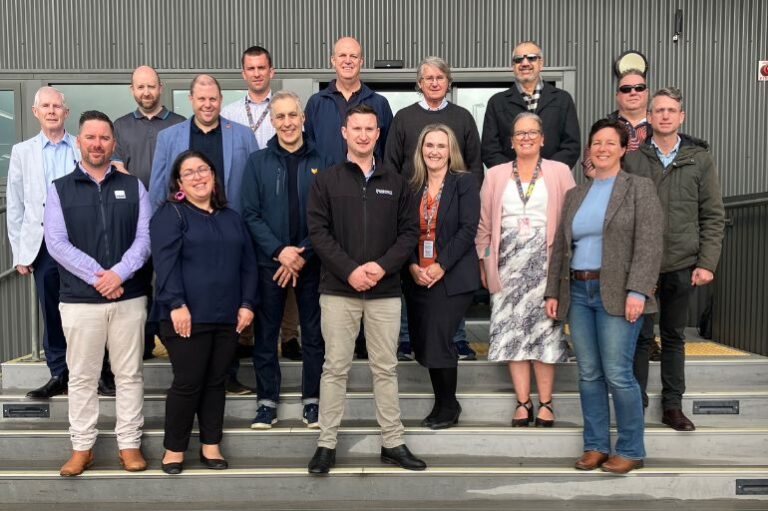In a move to embrace sustainability and electric vehicle trends, Hobart Airport has unveiled two electric vehicle fast charging units, marking just the beginning of a comprehensive approach to monitoring and managing energy usage across the airport premises.
Amidst ongoing construction activities, which form part of a long-awaited expansion of the airport, the chargers have been strategically installed on skids, allowing for flexible relocation as per the evolving needs outlined in the airport’s master plan.
The units installed are Delta 100kW City chargers, each with dual CCS2 plugs allowing dynamic load sharing across two vehicles. They are set to operate on the Chargefox billing platform, and will be open to car hire operators and valet parking customers.
First we want to ensure those needs are met and the systems are operational.” Then we will look to trial opening the chargers to the public.” Hobart Airport Head of Commercial Belinda Bresnehan said.
While the decision drew some disappointment from members of the Australian Electric Vehicle Association (AEVA), who stressed the necessity for expanded public charging infrastructure, Brigitte Schroeder, Commercial Manager of Ground Transportation at Hobart Airport, underscored the installation’s alignment with current requirements and its positioning as the inaugural step in a broader, long-term strategy.
Tom Green, Managing Director of Enginuity Power Solutions, the firm behind the design and installation of the charging infrastructure, outlined a visionary outlook for Hobart Airport. He envisaged a future where all vehicles within the airport precinct would be electric, with energy loads centrally monitored and managed. This proactive approach would enable management of EV charging and other flexible loads, thereby smoothing out peaks in energy demand.
Subsequent integration of solar panels, static batteries, or vehicle to grid (V2G) technologies for energy arbitrage and Frequency Control Ancillary Services (FCAS) could potentially offer additional revenue streams for the airport.
As a significant electrical microgrid operator, Hobart Airport assumes the role of the energy retailer to businesses operating within its precinct. Numerous tenants are operating their own fleets, either for hire, freight services, or airport services. Each of these has its own electrification goals and strategies, and the ability to incorporate these entities and manage their EV charging demands is paramount for the airport’s master plan.
Tom Green highlighted the importance of future-proofing the airport’s energy infrastructure by installing metering and control mechanisms. “The rental companies want to know that they’re going to get their charging needs met now and in the future,” he asserted, emphasising the proactive approach taken to ensure energy sustainability and resilience within the airport ecosystem.
A variety of stakeholders were consulted and engaged to complete this first stage of the larger project, and the introduction of fast charging units at Hobart Airport represents not only a progressive step towards sustainability but also a strategic move towards innovative energy management.






